Leaders: Clare Herbert and John Rawles
At the sound of the church clock chiming ten, 19 members joined the leaders at Eagle House, Northend, for a walk along St Catherine’s valley. We enjoyed bright sunshine for the whole walk, although it was quite cool in the shadows. Whilst it was quite a large party, there was plenty of space to observe nature, and many pairs of eyes and ears to do so. Not being especially expert, Clare and I were grateful that so many members contributed by pointing out birds and plants that we had not spotted when we checked the route a couple of days previously.
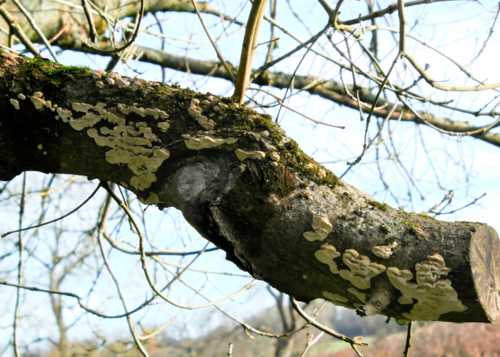
Ochre bracket fungus (Taimetes Ochraceus) – related to Turkeytail © John Rawles
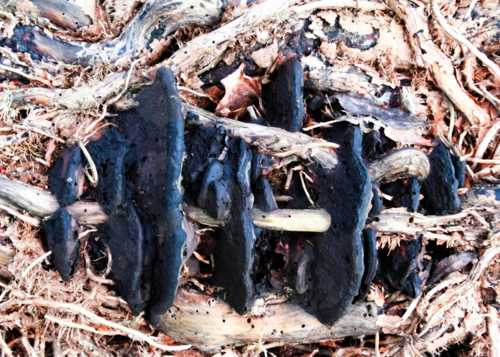
Alder bracket fungus (which had itself been attacked by beetles) on Ivy-covered fallen Alder trunk © John Rawles
Being early in the year, not many flowers – apart from snowdrops – were in evidence, but Alan Rayner was able to point out several types of fungi and mosses. Trametes Ochraceus (Ochre bracket fungus – related to Turkeytail) was found on the end of an Ash branch.
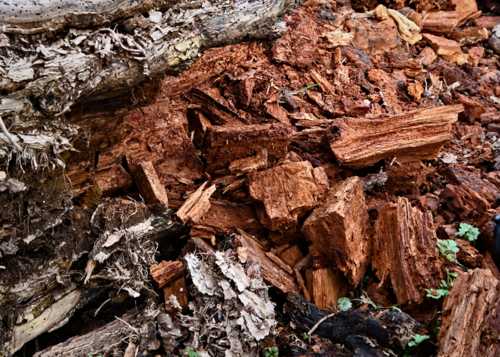
Effect of Alder bracket fungus – fallen tree trunk broken into characteristic cubic shapes © John Rawles
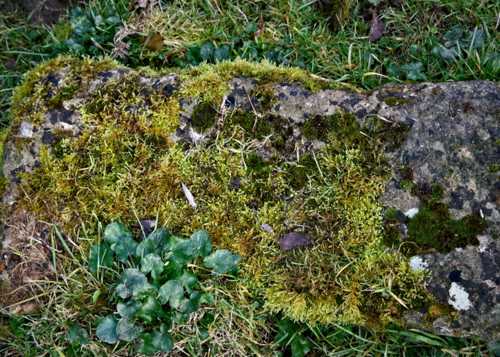
Six different mosses on one stone
© John Rawles
The brook is lined with purple-catkined Alders and we were shown Alder bracket fungus (some of which had itself been attacked by beetles) and how it broke down the wood of a fallen tree trunk into characteristic cubes (similar to Dry Rot). Many types of moss were found, including at least 6 varieties on one fallen stone. In addition, the aptly-named Silky Wall Moss was growing on a stone wall.
Several non-native trees have been planted in the fields along the brook. These include Atlas Cedar, Holm Oak, and 5 or 6 large Lime trees. Eagle House had an Arboretum associated with it in the past so, possibly, these may be related to those plantings (but this is very much a guess).
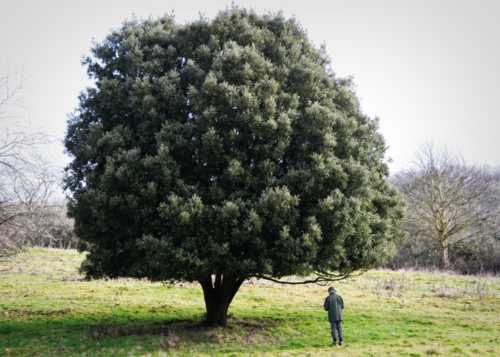
Holm Oak © John Rawles
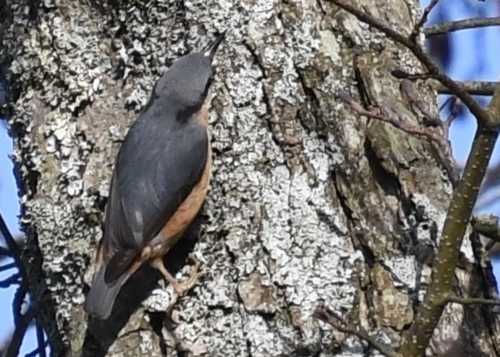
Nuthatch © John Rawles
No significant insects were observed, but quite a few species of birds were seen and/or heard. A goldcrest was spotted by the bridge at the foot of Steway Lane, closely followed by several nuthatches running up and down the Alders by the brook. We heard these singing as we walked along, and later heard the croak of a Raven. Other birds included Blackcap, Chaffinch, Collared Dove, and also Blue, Coal, and Long-tailed tits. Later on, we saw a Buzzard circling and then a Cormorant flew high overhead.
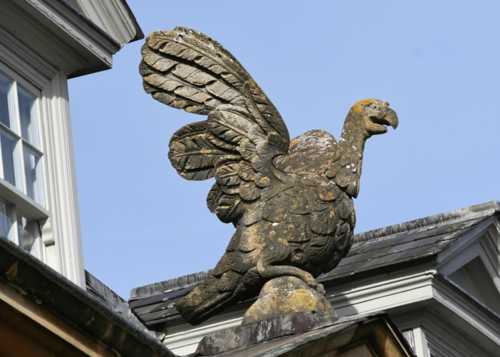
Eagle on Eagle House © John rawles
We stopped for coffee in a field with a Walnut tree, with its old fruit dropped beneath it. The field was shared with a flock of Soay sheep, who seemed unconcerned at out presence. We returned via the same route, observing woodpecker holes in various dead tree trunks, before spotting our final bird of the day – an Eagle (see photo)!
Clare Herbert and John Rawles
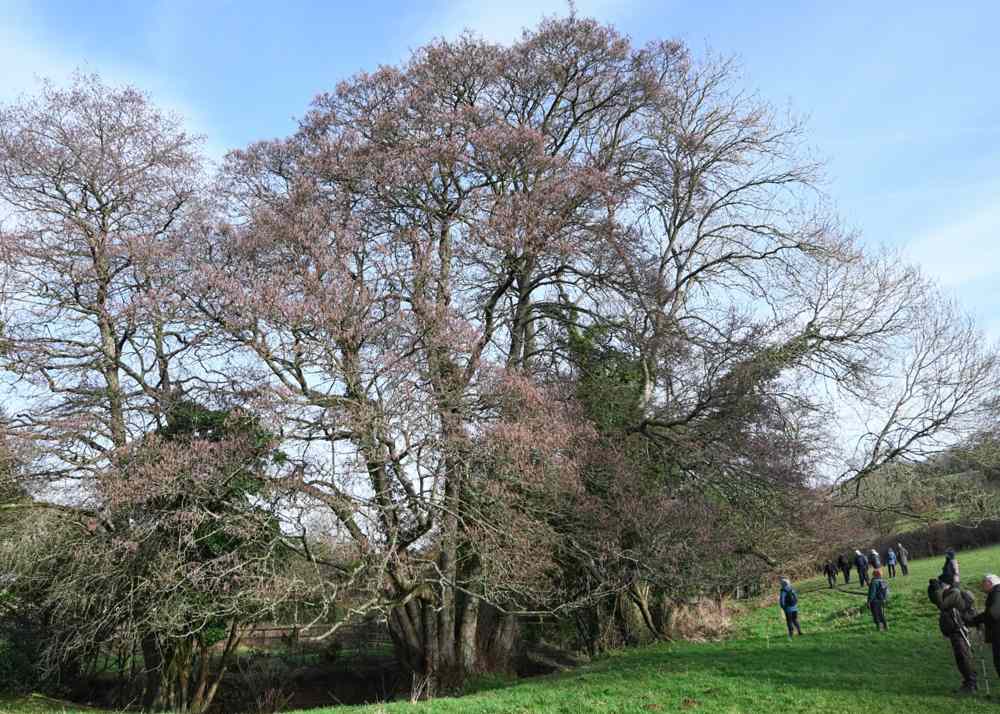
Group walking along the Alder-lined St Catherine’s Brook © John Rawles

Recent Comments